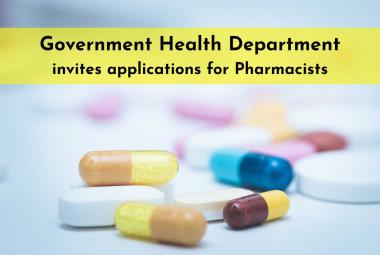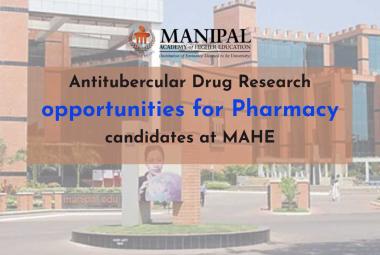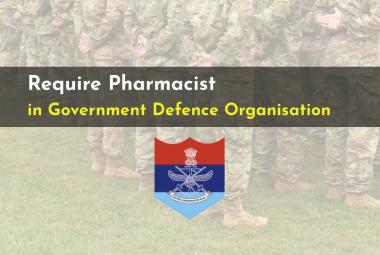{ DOWNLOAD AS PDF }
ABOUT AUTHORS:
Firake Bhushan M.1, Pandagale Sagar J.2, Firke Sandip D.3, Palshikar Gautam S.4
1Department of Pharmaceutical Chemistry, JSPM’s Jayawantrao Sawant College of Pharmacy and Research, Hadapsar, Pune
2Department of Pharmaceutical Analysis, JSPM’s Jayawantrao Sawant College of Pharmacy and Research, Hadapsar, Pune
3Department of Pharmaceutical Chemistry, SES’s R. C. Patel Institute of Pharmaceutical Education and Research, Shirpur
4Department of Pharmacognosy, JSPM’s Jayawantrao Sawant College of Pharmacy and Research, Hadapsar, Pune
bmf.jscopr@gmail.com
ABSTRACT:
Epilepsy is one of the most serious disorders of the brain, affecting about 50 million people worldwide. Epilepsy leads to multiple interacting medical, psychological, economic and social consequences. Successful seizure control is very important in decreasing the psychosocial and economic costs of epilepsy. Yet, most therapies didn’t completely improve patients for numerous reasons. The most effective antiepileptic drugs (AEDs) include phenytoin, carbamazepine, valproic acid, phenobarbital, and primidone. Of the older AEDs, carbamazepine and valproic acid together bring a threat of hepatic toxicity and have been associated with fetal anomalies. Carbamazepine and phenytoin aggravate hypersensitivity reactions in a significant number of patients, and phenytoin is associated with chronic adverse events (AEs). Phenytoin, carbamazepine, phenobarbital, and primidone are hepatic enzyme inducers. Valproic acid, on the contrary, is a powerful hepatic inhibitor.
The newer agents have fewer drug interactions and slight, if at all, effect on the CYP450 enzyme system and other metabolic pathways. One of these new agents was gabapentin (GBP). GBP, the new antiepileptic drug (AED) has a broad spectrum of anti-seizure effects, less adverse effects and less drug interaction. GBP has since achieved international acknowledgment, not for its antiepileptic properties, but also its effectiveness in the managing of acute and chronic pain syndromes, especially neuropathic pain. It is prescribed as an add-on medication for the treatment of patients aged >12 years with partial and secondary generalized tonic-clonic seizures and for children aged 3 to 12 years with partial seizures. It has been used for monotherapy in adults in 38 countries. Gabapentin is regarded as safe and tolerable with a promising pharmacokinetic profile and an extensive therapeutic index.
The present article reviews the available information that dealing with the long-standing efficiency and safety of gabapentin in the treatment of patients with epilepsy.
REFERENCE ID: PHARMATUTOR-ART-2380
|
PharmaTutor (Print-ISSN: 2394 - 6679; e-ISSN: 2347 - 7881) Volume 4, Issue 1 Received On: 25/07/2015; Accepted On: 25/08/2015; Published On: 01/01/2016How to cite this article: Firake BM, Pandagale SJ, Firke SD, Palshikar GS; Gabapentin: A new broad spectrum Antiepileptic Drug; PharmaTutor; 2016; 4(1); 19-25 |
INTRODUCTION:1, 2
Gabapentin (GBP) is a medication used as an anticonvulsant and analgesic. It was originally developed to treat epilepsy, and is currently also used to relieve neuropathic pain. It is recommended as a first line agent for the treatment of neuropathic pain arising from diabetic neuropathy, post-herpetic neuralgia, and central neuropathic pain. GBP is also commonly prescribed for many off-label uses, such as treatment of restless leg syndrome, anxiety disorders, insomnia, and bipolar disorder. There are, however, concerns regarding the quality of the trials conducted and evidence for some such uses, especially in the case of its use as a mood stabilizer in bipolar disorder. Two related drugs, pregabalin and a prodrug form called GBP enacarbil, are available.
HISTORY OF GABAPENTIN:3
GBP was originally discovered over 40 years ago by the Japanese, who initially were looking for an antispasmodic or muscle relaxant. It was later sold to Parke-Davis (Warner-Lambert, which merged with Pfizer in 2000), who discovered effectiveness of GBP for treating epileptics.
The U.S. Food and Drug Administration (FDA) approved GBP in 1993 under the brand name ‘Neurontin’ for the drug manufacturer ‘Pfizer’. The medication comes in capsule form, as a regular or extended-release tablet, and as a liquid.
In 2003, the FDA approved generic GBP. Many drug companies now make generic GBP.
FDA approved indications:
i. Postherpetic neuralgia
ii. Epilepsy.
Adjunctive therapy in the treatment of partial seizures with and without secondary generalization in patients over 12 years of age with epilepsy.
Adjunctive therapy in the treatment of partial seizures in pediatric patients age 3–12 years.
PHYSICAL PROPERTIES:4, 5
Description:GBP is a white to off-white crystalline solid.
Melting point: 162 - 166°C.
Dissociation constants: pKa1 = 3.68 at 25°C (carboxylic acid); pKa2 = 10.70 (primary amine).
Solubility:It is freely soluble in water and both basic and acidic aqueous solutions.
pKa:It have a pKa1 of 3.7 and a pKa2 of 10.7.
The log of the partition coefficient (n-octanol/0.05M phosphate buffer) at pH 7.4 is –1.25.
Isoelectric point = 7.14; solubility in water at pH 7.4 exceeds 10%.
Storage:
Store at room temperature away from light and moisture. Do not store in the bathroom. Keep all medications away from children and pets. Do not flush medications down the toilet or pour them into a drain unless instructed to do so. Properly discard this product when it is expired or no longer needed.
CHEMICAL DATA:5, 6
Molecular formula: C9H17NO2.
Molecular mass: 171.237 g/mol.
Chemical Structure:
Chemical name: 1-(aminomethyl)cyclohexaneacetic acid.
IUPAC name: 2-[1-(aminomethyl)cyclohexyl]acetic acid.
Synthesis: The synthesis is started with the Guareschi salt (obtained from cyclohexanone and cyanoacetate), which is hydrolyzed and decarboxylated to give 1,1-cyclohexanediacetic acid. The anhydride can be treated either with methanol to yield the half ester or with hydroxylamine to afford the N-hydroximide. The half ester is converted to the azide and subjected to a Curtius-type rearrangement to give the isocyanate which is hydrolyzed to GBP. GBP is also obtained from the corresponding N-hydroxyimide via a Lossen-type rearrangement by conversion of /the/ N-hydroxyimide to N-benzenesulfonyloximide and following reaction with triethylamine to the urethane ester.
CLINICAL DATA:7
· Trade names (in India): Encentin, Gaba, Gabacap, Gabacent, Gabafine, Gabaciz, Gabantin, Gabapin-SR, Gabata, etc.
· Routes:Oral.
COMPOSITION OF FORMULATIONS:7
· Each GBP capsule contains 100 mg, 300 mg, or 400 mg of GBP and some inactive ingredients like lactose, cornstarch, talc, gelatin, titanium dioxide, FD&C Blue No. 2, yellow iron oxide (300 mg and 400 mg only), and red iron oxide (400 mg only).
· Each GBP tablet contains 600 mg or 800 mg of GBP and some inactive ingredients like poloxamer 407, copovidone, corn starch, magnesium stearate, hydroxypropyl cellulose, talc, candelilla wax, and purified water.
· GBP oral solution contains 250 mg of GBP per 5 mL (50 mg per mL) and the inactive ingredients like glycerin, xylitol, purified water, and artificial cool strawberry anise flavor.
PHARMACOKINETIC DATA:8, 9
· Bioavailability: 27-60% (inversely proportional to dose; a high fat meal also increases bioavailability).
· Protein binding: Less than 3%.
· Metabolism: Not significantly metabolized.
· Half life: 5 to 7 hours.
· Excretion: Renal.
MECHANISM OF ACTION:9, 10
The mechanism of the anticonvulsant action of GBP has not been fully described. Though similar in structure to the endogenous neurotransmitter GABA, GBP has not been shown to bind to GABA receptors at concentrations at or below 1000 µM. GBP modulates the action of glutamate decarboxylase (GAD) and branched chain aminotransferase (BCAT), two enzymes involved in GABA biosynthesis. In human and rat studies, GBP was found to increase GABA biosynthesis, and to increase non-synaptic GABA neurotransmission in vitro. GBP (0.01-100 µM) has not been shown to interact with the sodium or L-type calcium ion channels targeted by the conventional anticonvulsant drugs phenytoin, carbamazepine and sodium valproate. Other neurophysiological findings indicate that GBP does not interact with glutamate, glycine, or NMDA receptors, further distinguishing its anticonvulsant mechanism from that of common antiepileptic medications. The precise mechanisms by which GBP produces its analgesic and antiepileptic actions are unknown. In animal models of analgesia, GBP prevents allodynia (pain-related behavior in response to a normally innocuous stimulus) and hyperalgesia (exaggerated response to painful stimuli). GBP prevents pain-related responses in several models of neuropathic pain in rats and mice (e.g., spinal nerve ligation models, spinal cord injury model, and acute herpes zoster infection model). GBP also decreases pain-related responses after peripheral inflammation (carrageenan footpad test, late phase of formalin test), but does not alter immediate pain-related behaviors (rat tail flick test, formalin footpad acute phase). The relevance of these models to human pain is not known. GBP exhibits antiseizure activity in mice and rats in both the maximal electroshock and pentylenetetrazole seizure models and other preclinical models (e.g., strains with genetic epilepsy, etc.). The relevance of these models to human epilepsy is not known. GBP is structurally related to the neurotransmitter gamma-aminobutyric acid (GABA) but has no effect on GABA binding, uptake or degradation. GBP did not exhibit affinity for a number of other common receptor ion channel, or transporter proteins. In vitro studies have shown that GBP binds with high-affinity to the α2δ subunit of voltage-activated calcium channels; however, the relationship of this binding to the therapeutic effects of GBP is unknown.
PHARMACOLOGY:10, 11, 12
GBP, an analog of GABA, is used as an anticonvulsant to treat partial seizures, amyotrophic lateral sclerosis (ALS), and painful neuropathies. Potential uses include monotherapy of refractory partial seizure disorders, and treatment of spasticity in multiple sclerosis, tremor. mood disorders, and attenuation of disruptive behaviors in dementia. GBP has high lipid solubility, is not metabolized by the liver, has no protein binding, and doesn't possess the usual drug interactions.
PHARMACOKINETIC STUDY:10, 11, 12
Following a 300 mg oral dose in healthy volunteers, the mean maximum plasma concentration of GBP is reached in 2 to 3 hours. Absorption kinetics of GBP are dose dependent. The bioavailability of a single oral dose of GBP is about 60%, but decreases with increasing dose, suggesting a saturable transport system. Unlike GABA, GBP has some lipophilicity, enabling it to readily cross the blood-brain barrier. At therapeutic concentrations, GBP is a substrate for the large neutral amino acid transporter (LAT1) across the blood-brain barrier (Dickens et al 2013). GBP is extensively distributed in body tissues and is not bound to human plasma proteins. GBP is eliminated almost completely by renal clearance. Renal impairment reduces drug clearance and raises plasma GBP concentrations. The pharmacokinetic parameters of GBP are not altered by repeated administration. Clinical effects are seen over the dose range of 600 to 1800 mg. Blood concentrations of GBP greater than 2 mg/mL are associated with a clinical response in patients with epilepsy. The dosage of GBP, however, should be adjusted according to clinical response. The half-life is 5 to 7 hours, meaning the drug needs to be administered 3 times a day to maintain optimal plasma concentrations. In healthy subjects, the daily exposure provided by less frequent GBP extended-release dosing is not significantly different from same daily dose with GBP immediate-release, administered more frequently.All pharmacological actions following GBP administration are due to the activity of the parent compound; GBP is not appreciably metabolized in humans.
Oral Bioavailability: GBP bioavailability is not dose proportional; i.e., as dose is increased, bioavailability decreases. Bioavailability of GBP is approximately 60%, 47%, 34%, 33%, and 27% following 900, 1200, 2400, 3600, and 4800 mg/day given in 3 divided doses, respectively. Food has only a slight effect on the rate and extent of absorption of GBP (14% increase in AUC and Cmax).
Distribution: Less than 3% of GBP circulates bound to plasma protein. The apparent volume of distribution of GBP after 150 mg intravenous administration is 58 ± 6 L (mean ± SD). In patients with epilepsy, steady-state predose (Cmin) concentrations of GBP in cerebrospinal fluid were approximately 20% of the corresponding plasma concentrations.
Elimination: GBP is eliminated from the systemic circulation by renal excretion as unchanged drug. GBP is not appreciably metabolized in humans. GBP elimination half-life is 5 to 7 hours and is unaltered by dose or following multiple dosing. GBP elimination rate constant, plasma clearance, and renal clearance are directly proportional to creatinine clearance. In elderly patients, and in patients with impaired renal function, GBP plasma clearance is reduced. GBP can be removed from plasma by hemodialysis.
PHARMACODYNAMIC STUDY:10, 11, 12, 13
GBP slightly reduces the release of several monoamine neurotransmitters (norepinephrine and serotonin), but not acetylcholine, from mammalian brain tissue. GBP protects against convulsions in standard animal seizure models, and this predicts the clinical efficacy of GBP in patients with partial seizures and secondarily generalized tonic-clonic seizures. No tolerance has been noted with respect to the anticonvulsant effects of GBP. Even though it is structurally similar to GABA, GBP does not act through mechanisms related to this neurotransmitter, but rather by events modulated through its interaction with a receptor thought to be present only in the brain. However, some neurons that respond to GBP are GABAergic. The specific binding site is a protein of voltage-gated calcium channels and, as a result, modulates the action of calcium channels and neurotransmitter release. GBP is similar to carbamazepine and phenytoin with respect to effects on excitatory mechanisms and segmental inhibition in the trigeminal complex, but it differs in its effects on inhibitory pathways descending from the reticular formation. GBP has also been considered to be a neuroprotective agent by inhibition of glutamate synthesis. The mechanism of relief of neuropathic pain is not clear, but GBP does not appear to affect the same pathways as opioids or tricyclic antidepressants. Current evidence indicates that it affects a voltage-gated calcium channel in the pain-transmitting nerve cells of the spinal cord. GBP enacarbil, approved for restless legs syndrome, is an actively transported prodrug of GBP that provides sustained dose-proportional exposure to GBP and predictable bioavailability.In a population pharmacodynamics study, response increased with increasing dose as assessed by Clinical Global Impression of Improvement, whereas the total score on International Restless Legs Scale was similar at all exposures tested.
Therapeutic drug monitoring: A rapid and validated isocratic fluorometric high performance liquid chromatography method is available for the determination of GBP in human plasma as well as urine for clinical application and can be used to evaluate pharmacokinetics of GBP in humans.
SIDE EFFECTS:14, 15
The signs of an allergic reaction to GBP: hives; fever; swollen glands; painful sores in or around your eyes or mouth; difficulty breathing; swelling of your face, lips, tongue, or throat are observed.
The side effects of GBP may include:
- increased seizures;
- fever, swollen glands, body aches, flu symptoms;
- skin rash, easy bruising or bleeding, severe tingling, numbness, pain, muscle weakness;
- upper stomach pain, loss of appetite, dark urine, jaundice (yellowing of the skin or eyes);
- chest pain, irregular heart rhythm, feeling short of breath;
- confusion, nausea and vomiting, swelling, rapid weight gain, urinating less than usual or not at all;
- new or worsening cough, fever, trouble breathing;
- rapid back and forth movement of your eyes; or
- severe skin reaction -- fever, sore throat, swelling in your face or tongue, burning in your eyes, skin pain, followed by a red or purple skin rash that spreads (especially in the face or upper body) and causes blistering and peeling.
Some side effects are more likely in children taking GBP like
- changes in behavior;
- memory problems;
- trouble concentrating; or
- acting restless, hostile, or aggressive.
Common GBP side effects may include:
- dizziness, drowsiness;
- dry mouth, blurred vision;
- headache;
- diarrhea; or
- swelling in your hands or feet.
DRUG INTERACTIONS:16
Drug interactions may change how your medications work or increase your risk for serious side effects. Tell your doctor or pharmacist if you are taking other products that cause drowsiness including alcohol, antihistamines (such as cetirizine, diphenhydramine), drugs for sleep or anxiety (such as alprazolam, diazepam, zolpidem), muscle relaxants, and narcotic pain relievers (such as codeine, morphine).
Check the labels on all your medicines (such as allergy or cough-and-cold products) because they may contain ingredients that cause drowsiness. Ask your pharmacist about using those products safely.
Do not use this medication with other medications that contain gabapentin (including gabapentin enacarbil).
This medication may interfere with certain laboratory tests for urine protein. Make sure laboratory personnel and all your doctors know you use this drug.
PRECAUTIONS:17
If GBP is discontinued and/or an alternate anticonvulsant medication is added to the therapy, this should be done gradually over a minimum of 1 week.
Before using this medication, tell your doctor or pharmacist your medical history, especially of: kidney disease, mental/mood problems (such as depression, thoughts of suicide), use/abuse of drugs/alcohol. This drug may make you dizzy or drowsy or cause blurred vision. Do not drive, use machinery, or do any activity that requires alertness or clear vision until you are sure you can perform such activities safely. Limit alcoholic beverages. Before having surgery, tell your doctor or dentist about all the products you use (including prescription drugs, nonprescription drugs, and herbal products). Older adults may be more sensitive to the side effects of this drug, especially swelling of the hands/ankles/feet, dizziness, or loss of coordination. Dizziness and loss of coordination can increase the risk of falling. Children may be more sensitive to the side effects of this drug, especially mental/mood/behavior changes (such as hostility, problems concentrating, restlessness). During pregnancy, this medication should be used only when clearly needed. Discuss the risks and benefits with your doctor. GBP passes into breast milk. Consult your doctor before breast-feeding.
OVERDOSE:17
A lethal dose of GBP was not identified in mice and rats receiving single oral doses as high as 8000 mg/kg. Signs of acute toxicity in animals included ataxia, labored breathing, ptosis, sedation, hypoactivity, or excitation. Acute oral overdoses of GBP up to 49 grams have been reported. In these cases, double vision, slurred speech, drowsiness, lethargy and diarrhea, were observed. All patients recovered with supportive care. GBP can be removed by hemodialysis. Although hemodialysis has not been performed in the few overdose cases reported, it may be indicated by the patient's clinical state or in patients with significant renal impairment. If overdose is suspected, contact a poison control center or emergency room immediately Symptoms of overdose may include: severe drowsiness, slurred speech, weakness.
Overdose symptoms may include:
- blurred vision
- drowsiness
- weakness
- difficulty with speech
- diarrhea
- trouble breathing
- poor coordination
If you missed a dose of Neurontin take the dose as soon as you remember, but don`t take extra medicine to make up the dose that you have missed. If it is almost time for your next dose, take the medicine at your next regularly scheduled time.
MEDICINAL USES: 17,18,19
GBP is used primarily to treat seizures and neuropathic pain. There are, however, concerns regarding the quality of the research on its use to treat migraines, bipolar disorder, and pain.
Pain:
There is weak evidence that GBP provides pain relief for around 10% of people who take it for fibromyalgia, and for chronic neuropathic pain. The evidence is stronger for effectiveness in postherpetic neuralgia and diabetic neuropathy. It may reduceopioid use following surgery, and may be helpful in neuropathic pain due to cancer. GBP does not ameliorate chronic pain after surgery. It is not effective in HIV-associated sensory neuropathy. When used for neuropathic pain it does not appear superior to carbamazepine. It appears to be as effective as pregabalin and costs less It does not appear to provide benefit for complex regional pain syndrome There is no evidence that it is useful for migraine prevention.
Seizures:
GBP is approved for treatment of focal seizures, partial seizures and mixed seizures. There is insufficient evidence for its use in generalized epilepsy.
Anxiety disorders:
GBP is effective in social anxiety disorder, panic disorder and generalized anxiety disorder.
Other uses:
GBP may be useful in the treatment of comorbid anxiety in bipolar patients, (however not the bipolar state itself). GBP may be effective in acquired pendular nystagmus and infantile nystagmus, (but not periodic alternating nystagmus). It is effective in hot flashes. It may be effective in reducing pain and spasticity in multiple sclerosis. GBP may reduce symptoms of alcohol withdrawal (but it does not prevent the associated seizures. Use for smoking cessation has had mixed results. GBP is effective in alleviating itching in renal failure (uremic pruritus) and itching of other etiologies. It is well-established in the treatment of restless leg syndrome. (A prodrug form, GBP enacarbil, is also effective.) GBP is effective in insomnia. GBP is not effective alone as a mood-stabilizing treatment for bipolar disorder. There is insufficient evidence to support its use in obsessive-compulsive disorder and treatment-resistant depression. GBP does not appear effective for the treatment of tinnitus
POSOLOGY: 17,18,19
Usual adult dose for:
- Epilepsy
- Postherpetic Neuralgia
- Restless Legs Syndrome
Additional dosage information:
· Dose Adjustments
· Other Comments
Usually adult dose for epilepsy:
Initial dose:: 300 mg orally on day one, 300 mg orally twice a day on day two, then 300 mg orally 3 times a day on day three.
Maintenance dose: 900 to 1800 mg orally in 3 divided doses. If necessary, the dose may be increased using 300 mg or 400 mg capsules three times a day up to 1800 mg/day. Dosages up to 2400 mg/day have been well tolerated in long-term clinical studies. Doses of 3600 mg/day have also been administered to a small number of patients for a relatively short duration, and have been well tolerated. The maximum time between doses in the three times a day schedule should not exceed 12 hours.The safety and effectiveness of GBP available under the trade name Gralise (R) or Horizant (R) in patients with epilepsy has not been studied.
Usual Adult Dose for Postherpetic Neuralgia:
Initial dose:300 mg orally on day one, 300 mg orally twice a day on day two, then 300 mg orally 3 times a day on day three.
Maintenance dose: 900 to 1800 mg orally in 3 divided doses.
Efficacy was demonstrated in clinical studies over a range of 1800 mg/day to 3600 mg/day
Usual Adult Dose for Restless Legs Syndrome:
GBP enacarbil: 600 mg orally once daily with food at about 5 PM.
Dose adjustment: If the dose of GBP available under the trade name Gralise (R) is reduced, discontinued, or substituted with an alternative medication, this should be done gradually over a minimum of one week or longer or as directed by the physician.
If the dose of GBP enacarbil available under the trade name Horizant (R) is discontinued, patients with RLS receiving 600 mg or less once daily can discontinue the drug without tapering. Patients with PHN receiving Horizant (R) twice daily should reduce the dose to once daily for 1 week prior to discontinuation to minimize the potential for withdrawal seizure.
GABAPENTIN "PROS" AND "CONS": 19
Advantages:
- Lack of cardiovascular or respiratory side effects.
- Very good tolerability.
- Benign side-effect profile.
- Lack of hepatic metabolism.
- Lack of liver and enzyme-inducing or -inhibiting effects.
- Absence of drug interactions with other AEDs.
- Available in liquid formulation.
- GBP may be effective in treatment-resistant depression and refractory bipolar disorder.
- Can be rapidly titrated.
- Broad therapeutic index - GBP can be prescribed in a wide range of doses, based on individual patient needs, without increased risk of dose-dependent side effects.
Disadvantages:
- Delay in response due to need for dosage titration.
- Dosage adjustment is required in patients with renal impairment.
- Frequent dosing regimen due to the short half-life.
- Low antiepileptic potency, not effective for all types of seizures.
- High rate of somnolence and dizziness.
- GBP may cause weight gain.
- Possible withdrawal syndrome after discontinuation.
- Decreased bioavailability at the high doses.
Non-predictable dose-response relationship due to nonlinear pharmacokinetics.
CONCLUSION:
Epilepsy is one of the most serious disorders of the brain, affecting about 50 million people worldwide. Gabapentin (GBP), the new antiepileptic drug (AED) has a broad spectrum of anti-seizure effects, less adverse effects and less drug interaction. It is prescribed as an add-on medication for the treatment of patients aged >12 years with partial and secondary generalized tonic-clonic seizures and for children aged 3 to 12 years with partial seizures. It has been used for monotherapy in adults in 38 countries. Gabapentin is regarded as safe and tolerable with a promising pharmacokinetic profile and an extensive therapeutic index.
REFERENCES:
1. Rang H. P. et. al.; Pharmacology; 5th edition; International print-o-pac Limited; 2013; 558-559.
2. Barar F. S. K., Essential of Pharmacotherapeutics; 1st edition; S.chand, 1985; 102.
3. http://www.emedexpert.com/facts/gabapentin-facts.shtml
4. Walker Roger clinical pharmacy and therapeutics; 4th edition; 2007, 457.
5. O'Neil, M.J. (ed.). The Merck Index - An Encyclopedia of Chemicals, Drugs, and Biologicals. 13th Edition, Whitehouse Station, NJ: Merck and Co., Inc., 2001., 767, 4342.
6. Ullmann's Encyclopedia of Industrial Chemistry. 6th ed.Vol 1: Federal Republic of Germany: Wiley-VCH Verlag GmbH & Co. 2003 to Present, p. V3 466 (2003)
7. http://www.rxlist.com/neurontin-drug.htm.
8. Finkel Richard; Pharmacology; 4th edition; Wolters Kluwer India Pvt. Ltd., 177, 181.
9. Goodman and Gillman’s; The Pharmacology Basis of Therapeutics; 10th edition; 538-539.
10. Tripathi K. D.; Essential Of Medical Pharmacology; Jaypee Brothers Medical Publishers (p) Ltd. 2003; 377.
11. Satoskar R. S.; Pharmacology & Pharmacotherapeutics; Revised 21st edition; By Saurabh Printer Pvt.Ltd.; 2009, 131, 179.
12. Sharma H. L.; Principles of Pharmacology; Paras Medical Publisher; 1st edition; 2007; 541.
13. Yagi T, Naito T, Mino Y, Takashina Y, Umemura K, Kawakami J. Rapid and validated fluorometric HPLC method for determination of gabapentin in human plasma and urine for clinical application. J Clin Pharm Ther 2012;37(1):89-94.
14. http://en.wikipedia.org /wiki / Gabapentin.
15. http://www.drugs.com/sfx/neurontin-side-effects.html.
16. http://www.drugs.com/drug-interactions/gabapentin.html
17. Spira PJ, Beran RG. Neurology. 2003 Dec 23;61(12):1753-9.
18. http://www.we bmd.com.
19. http://www.medscape.org.
NOW YOU CAN ALSO PUBLISH YOUR ARTICLE ONLINE.
SUBMIT YOUR ARTICLE/PROJECT AT editor-in-chief@pharmatutor.org
Subscribe to Pharmatutor Alerts by Email
FIND OUT MORE ARTICLES AT OUR DATABASE









